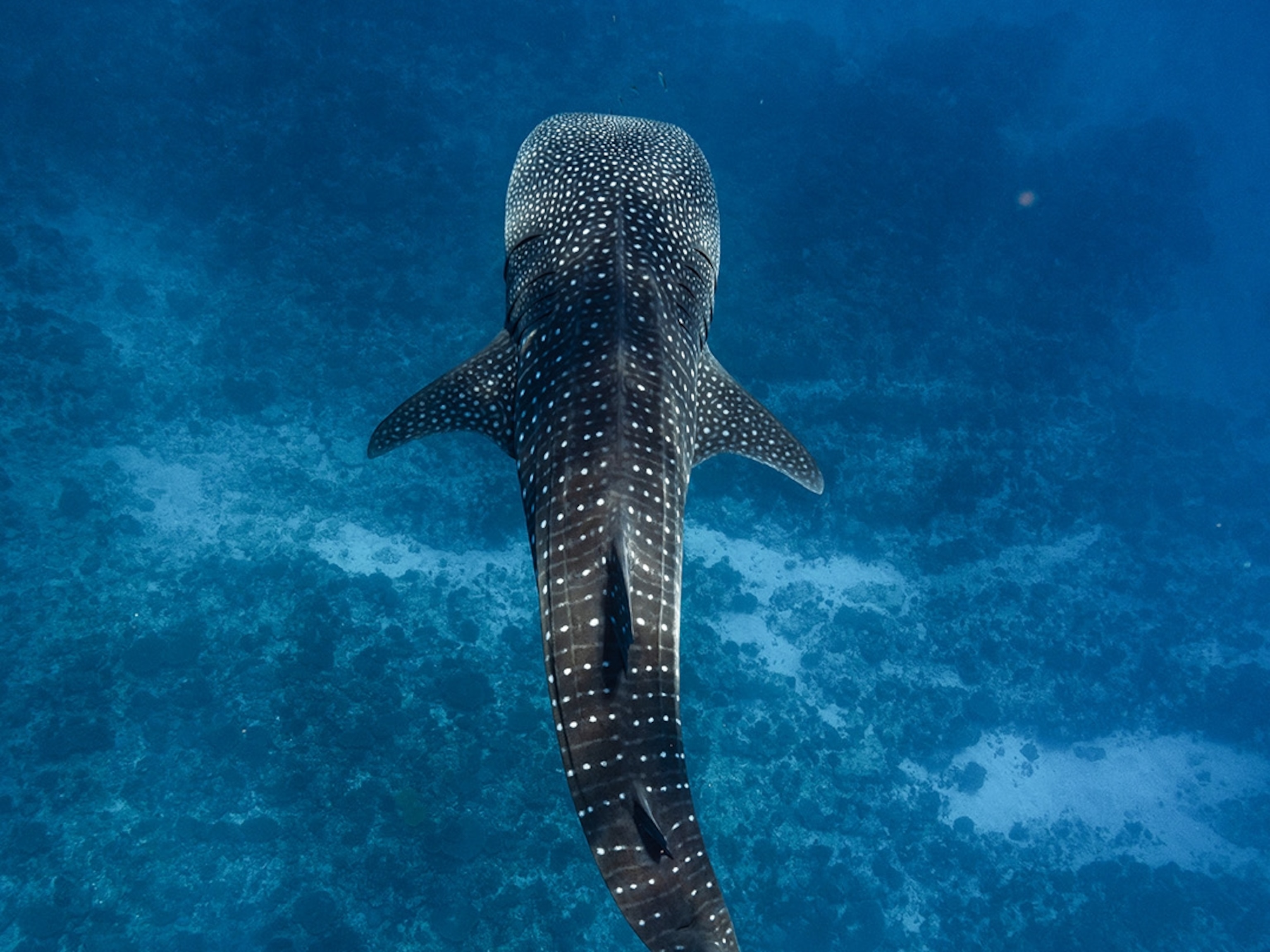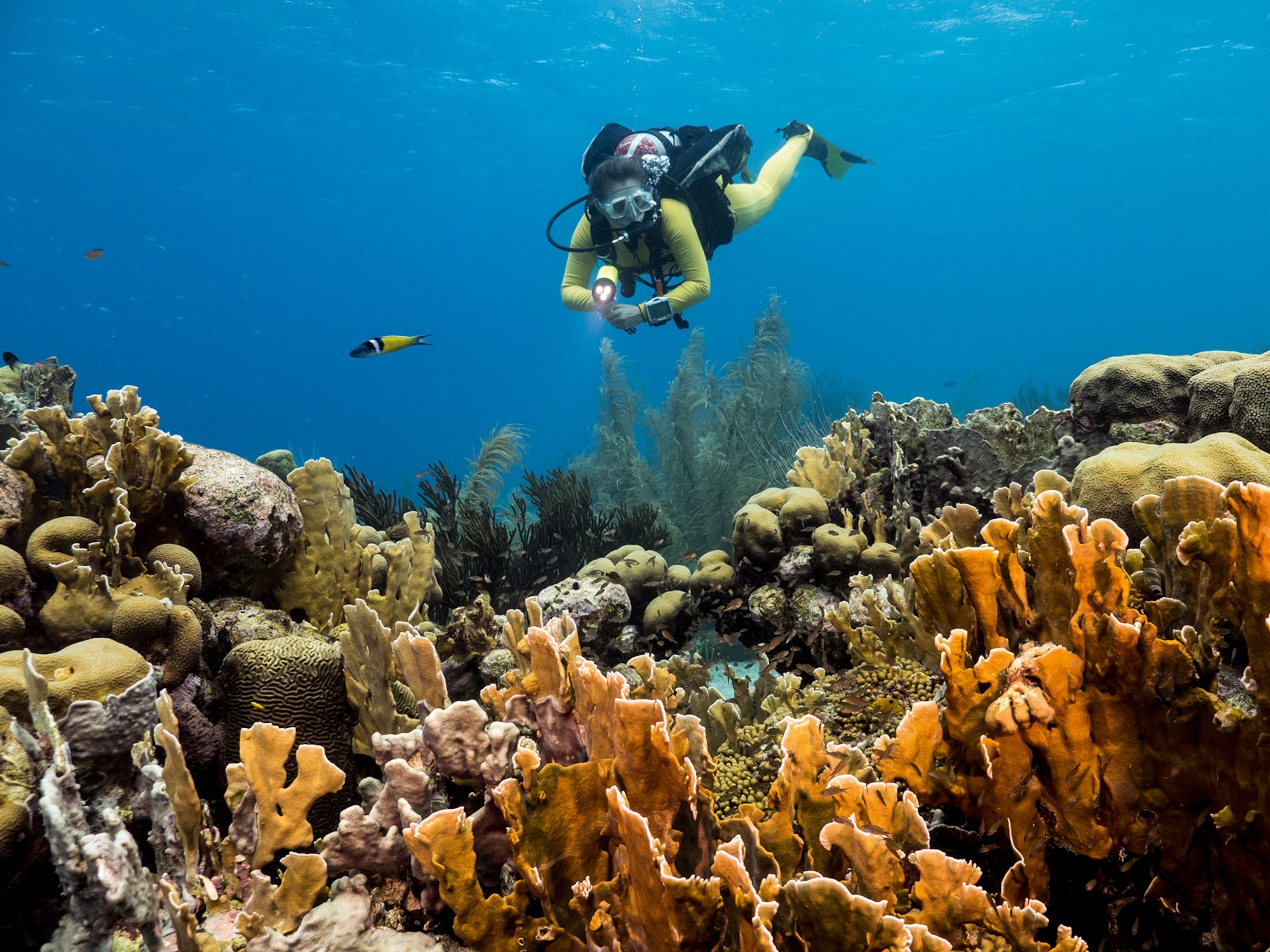
Discover the Best of Oahu
Plan your tropical getaway with these top 10 tips.
Each Hawaiian island is unique in its own right, but Oahu offers its visitors a sample of what the Aloha State has to offer as a whole.
Wildlife
From November through May, humpback whales can be spotted along the warm and shallow shores of Oahu. Making the arduous trek from Alaska, whales come to the islands to breed and birth new calves. Makapu’u Lighthouse is a great place to observe them from the shore, while an organized boat tour will give you the opportunity to see these gentle giants up close.
Natural Wonder
Hanauma Bay is a crescent-shaped pool that was formed thousands of years ago in a volcanic crater. The bay offers protection to its thriving marine ecosystems, making it one of the best places to snorkel on the island. After watching a brief video on the bay’s conservation efforts and reef safety at the visitors center, guests are encouraged to snorkel the crystal clear water in search of sea turtles, parrot fish, and even Hawaii’s state fish, the vibrantly colored humuhumunukunukuapua’a (reef triggerfish). Please note that the park only allows 3,000 visitors per day and is closed on Tuesdays to give the marine ecosystems a day of rest.
National Park
Lē‘ahi State Monument (more commonly referred to as Diamond Head Crater) is one of the most iconic landmarks on the island. Often the backdrop for Waikiki’s postcards, Diamond Head Crater is more than just a dominant profile. Travelers looking for an easy day hike that rewards its guests with a beautiful view of Waikiki will enjoy the mile and a half trek to the summit and back.
Archaeological Site
Tucked into the lush Waimea Valley lies Hale O Lono Heiau, a sacred Hawaiian temple dedicated to Lono, the Hawaiian god of agriculture. Visit the temple (one of the oldest in the state) in October during Makahiki season and you might be treated to festive ceremonies and traditions.
Cultural Site
To get an interactive sample of Polynesian culture, look no further than the Polynesian Cultural Center located on the northern side of the island. This Polynesian theme park highlights six Pacific island nations: Tonga, Tahiti, Fiji, Samoa, Aotearoa, and Hawaii. Guests can wander throughout the 42-acre park, learning about the heritage, traditions, and culture of each nation. Sample freshly pounded poi in Hawaii or learn how to toss a spear in Tonga. To get the most out of your trip, stay for the traditionally smoked imu pork at the famed Ali’i Luau.
Best Day Trip
It’d be remiss to visit Oahu and not spend time on the North Shore. The North Shore offers a more laid-back vibe to the otherwise bustling island of Oahu. Do a little souvenir shopping and grab a refreshing shave ice in the historic surfer town of Haleiwa. Burn off those extra vacation calories in the famous surf at Waimea Bay. Or head further north to hit some of the most delicious fruit stands and garlic shrimp trucks the island has to offer.
Off the Beaten Path
Don’t miss one of Oahu’s hidden wonders, Byodo-In Temple. The temple, a smaller-scale replica of a temple in Uji, Japan, lies nestled in the shadow of the Ko’olau Mountains at the back of the Valley of the Temples cemetery. Upon entry, visitors can ring the 300-ton sacred welcome bell before strolling through the temple grounds. Byodo-In Temple is the perfect place to find tranquility on a normally energetic and chaotic island.
- National Geographic Expeditions
Most Iconic Experience
For a truly iconic Hawaiian experience, attend one of Oahu’s famed luaus. Guests are typically welcomed with either a flower or kukui nut lei, handed a traditional mai tai, and led to the evening’s entertainment. Feast on Hawaiian staples like kalua pork and poi while being regaled with traditional Hawaiian music and awed by the mesmerizing hula.
Historic Site
The Pearl Harbor Visitor Center and the U.S.S. Arizona Memorial are two of the most visited historic landmarks on the island of Oahu. Free tickets to the memorial can be obtained in advance or day-of. Guests are shuttled via Navy boat to the final resting place of the U.S.S. Arizona battleship that sank along with nearly 1,000 trapped crew members in the Japanese attack on Pearl Harbor. The visitors center offers detailed accounts of the December 7, 1941, attack that launched the U.S. into World War II.
Local Quirk
You’re bound to hear it spoken among the locals. What sounds like broken English is actually Pidgin, a Hawaiian creole that derives from an array of languages spoken on the island. Originally created so that immigrant plantation workers could communicate with each other, Pidgin is now listed as one of Hawaii’s official languages. The ubiquitous and equally ambiguous “da kine” is the English equivalent of “whatchamacallit.”





